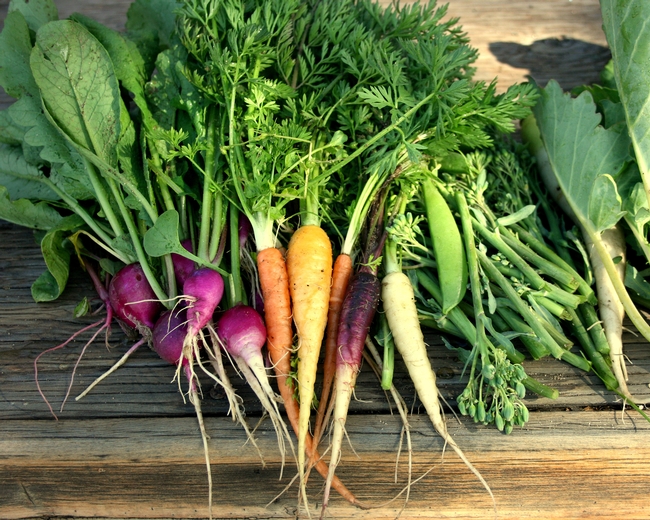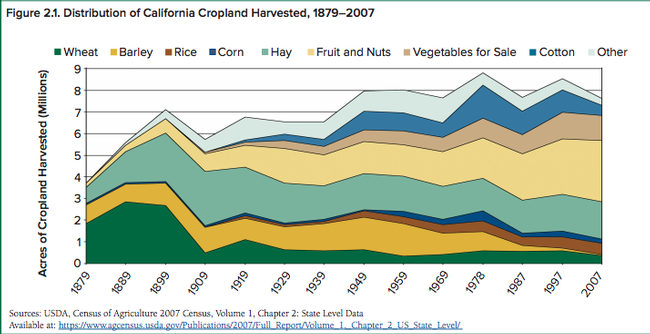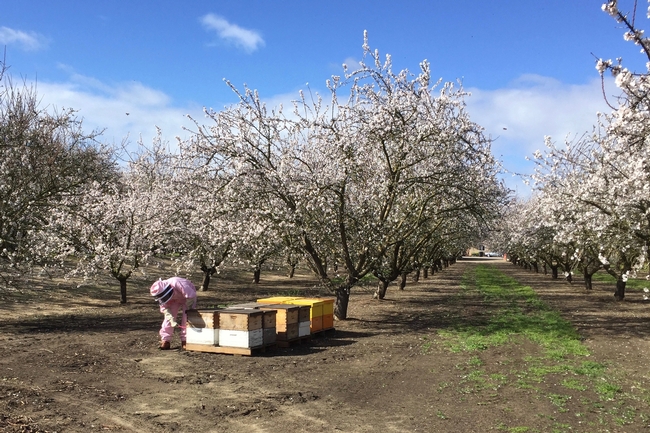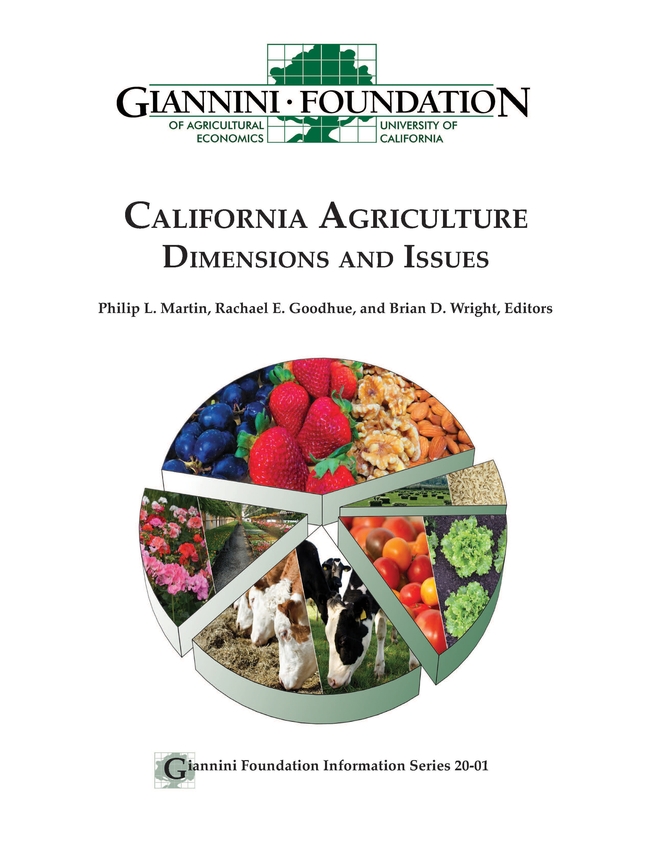
Posts Tagged: martin
Congrats to 4 Outstanding UC Davis Student Entomologists: Recipients of NSF-GRFP Grants
Congratulations to the four student entomologists in the UC Davis Department of Entomology...
Scorpions Draw Curious Looks and Scores of Questions
What's to know about scorpions, the predatory arachnids in the order Scorpiones? Access Wikipedia,...
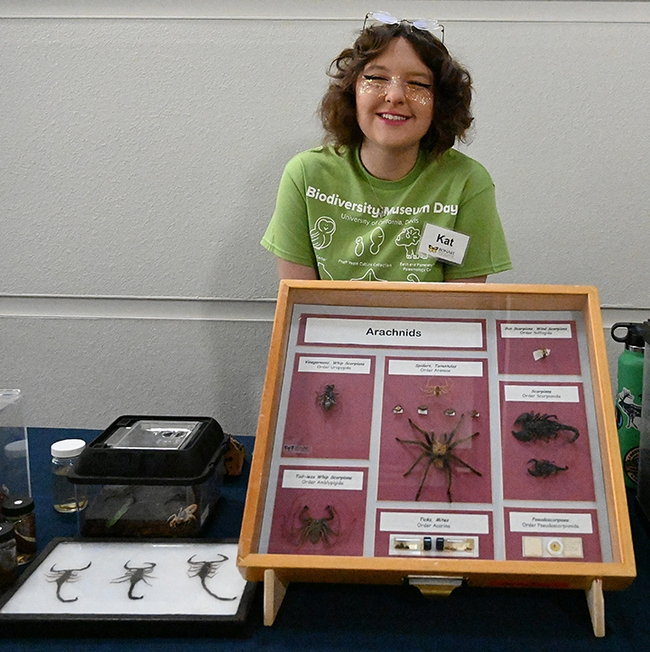
UC Davis entomology freshman student Kat Taylor answers questions at the Jason Bond lab display table. (Photo by Kathy Keatley Garvey)
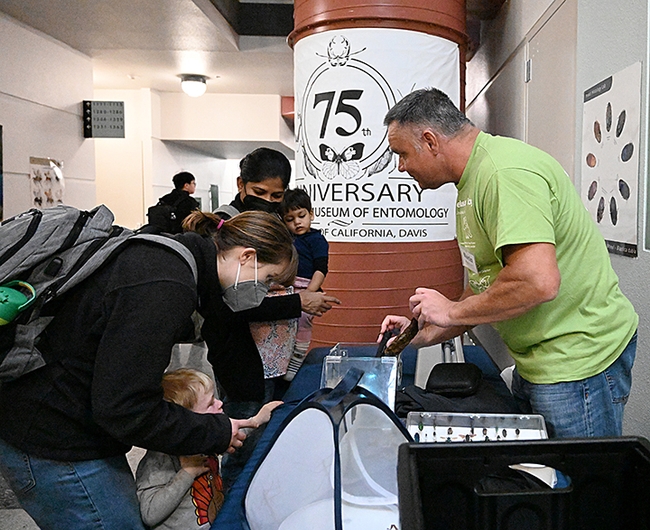
Martin Hauser, senior insect biosystematist in the Plant Pest Diagnostics Branch, California Department of Food and Agriculture, fluoresces an Asian forest scorption. (Photo by Kathy Keatley Garvey)
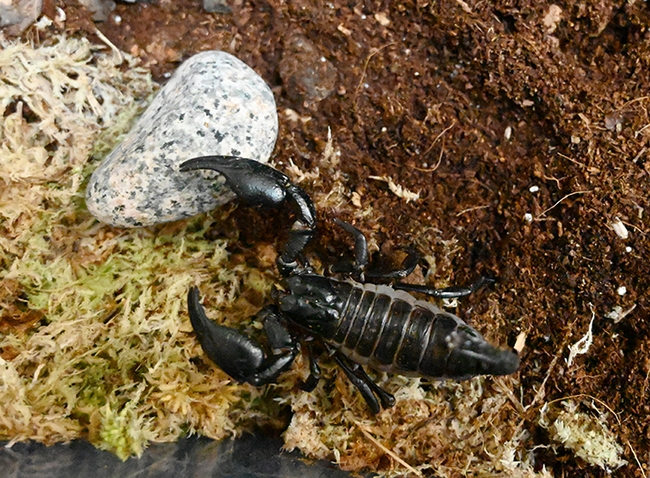
Close-up of an Asian forest scorpion shown at the UC Davis Biodiversity Museum Day by Martin Hauser of the CDFA. (Photo by Kathy Keatley Garvey)

The Asian forest scorpion, under ultraviolet light, glows blue-green. (Photo by Kathy Keatley Garvey)
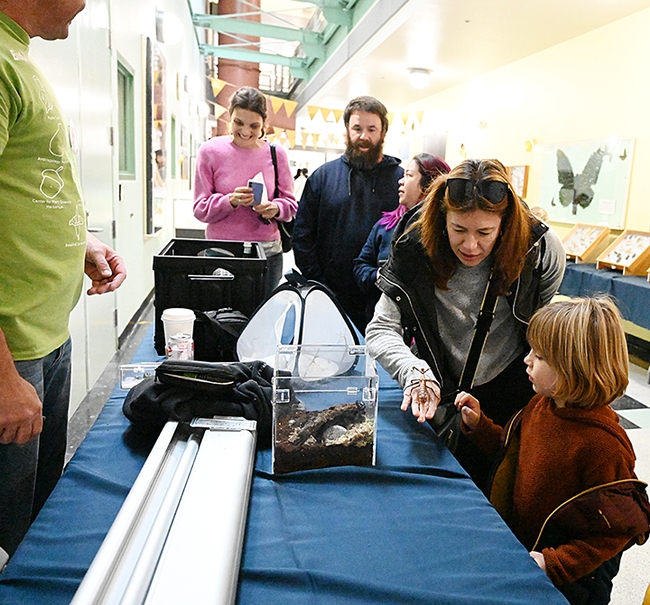
Visitors delighted in holding stick insects, aka walking sticks, at the Martin Hauser display in the Academic Surge Building during the UC Davis Biodiversity Museum Day. (Photo by Kathy Keatley Garvey)
It's Friday Fly Day!
It's Friday Fly Day--and time to post images of a syrphid fly. Syrphid flies, often mistaken for...
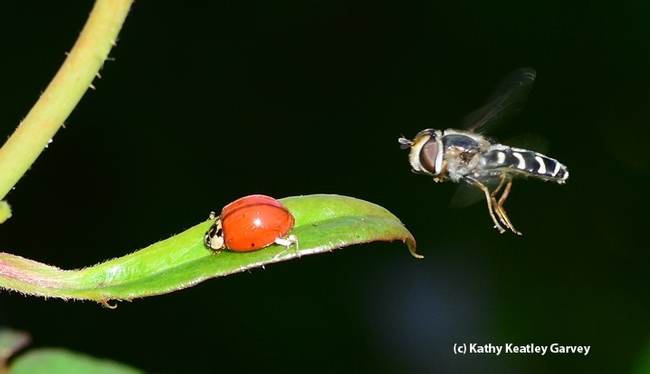
A syrphid fly, a female Scaeva pyrastri, hovers over an Asian lady beetle (Harmonia axyridis). (Photo by Kathy Keatley Garvey)
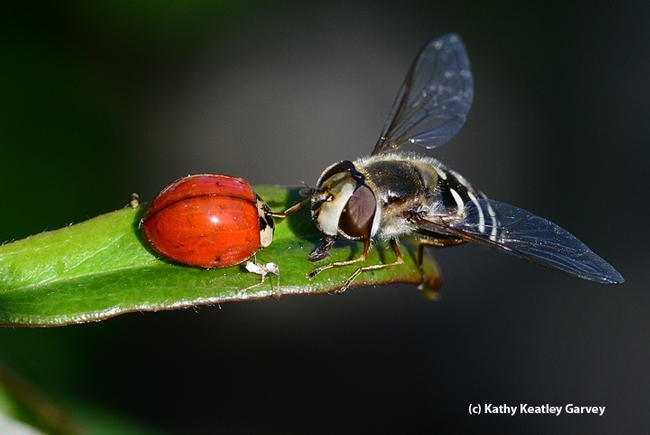
The syrphid fly licks honey dew from the head of the lady beetle, which had just feasted on the honeydew-producing aphids on a rose bush. (Photo by Kathy Keatley Garvey)
New WeedCUT online tool to manage invasive weeds in wildlands without herbicides
California has abundant wildlands — forests, rangeland, open areas, wildlife refuges and...
Will California remain leader in U.S. agricultural production?
"California Agriculture: Dimensions and Issues" by the Giannini Foundation of Agricultural Economics details the past, present and future of many of California's major agricultural commodities, including grapes, tree fruits and nuts, vegetable crops, dairy, livestock, nursery and floral production, and cannabis. The new 18-chapter book, written by agricultural economists at UC Davis, UC Berkeley and UC Riverside, addresses issues such as labor, water, climate and trade that affect all of California agriculture.
"California agriculture overcame many obstacles to become the nation's number one farm state. Leading agricultural economists are generally optimistic that California agriculture will continue to thrive in the 21st century, despite continuing large challenges," said Philip Martin, UC Davis emeritus professor of agricultural and resource economics, who is co-editor of the new publication.
For over 70 years, California has led the nation in farm sales due to its specialization in high-value commodities such as fruits, nuts, vegetables and other horticultural crops. The book uses the most recent Census of Agriculture data to show that, of the $64 billion of these crops produced in the U.S. in 2017, California produced nearly half by value ($31 billion).
More than 44 percent of California's $50 billion in farm sales in 2017 were fruits and nuts, with 17 percent of sales from vegetables and melons, and 14 percent from nursery and other horticultural specialties crops. Many of these high-value specialty crops are also very labor-intensive and face challenges from increased cost and decreased availability of agricultural labor. The book discusses how California growers effectively responded to these labor challenges by adopting labor-saving mechanization. California remains competitive with producers elsewhere by relying on superior plant varieties, integrated pest management, and improved irrigation methods that increase both the quantity and quality of California agricultural commodities.
Water, climate and trade pose challenges and opportunities for California agriculture. In the last decade, water scarcity and decreased water quality, along with regulations to address these issues like the Sustainable Groundwater Management Act, have prompted farmers to use scarce water to irrigate more valuable crops, as with the switch from cotton to almonds. Increased regulations and the increasing scarcity of water affect high-value specialty crops as well as the dairy and livestock industries that accounted for 24% of California farm sales in 2017.
Climate variability, including drought and heat stress, affects farmworker welfare, crop yields and dairy productivity. Retaliatory tariffs resulting from the 2018 trade war reduced U.S. agricultural exports to China by close to $14.4 billion per year, as exports of dairy, livestock and specialty crops fell.
California agriculture has a rich history of overcoming challenges by pursuing innovative research, adopting new technologies, and adapting to changing conditions. Learning how California agriculture has succeeded in the past suggests that the state can maintain its dominant role as an agricultural producer in the future.
Learn more about several of the major California agricultural commodities and the issues and opportunities they face in this new, second edition of California Agriculture: Dimensions and Issues. Read the book for free online as part of the Giannini Foundation's Information Series (20-01) at https://giannini.ucop.edu/publications/cal-ag-book/. A paperback copy of the 414-page book can be ordered for $55 at http://bit.ly/CalAgBook2ndEd.
The Giannini Foundation was founded in 1930 from a grant made by the Bancitaly Corporation (later renamed Bank of America) to the University of California. Its mission is to promote and support research and outreach activities in agricultural economics and rural development to benefit the agricultural industry, policymakers, and society at large. Giannini members include University of California faculty and Cooperative Extension Specialists in agricultural and resource economics. Learn more about the Giannini Foundation of Agricultural Economics at https://giannini.ucop.edu.

